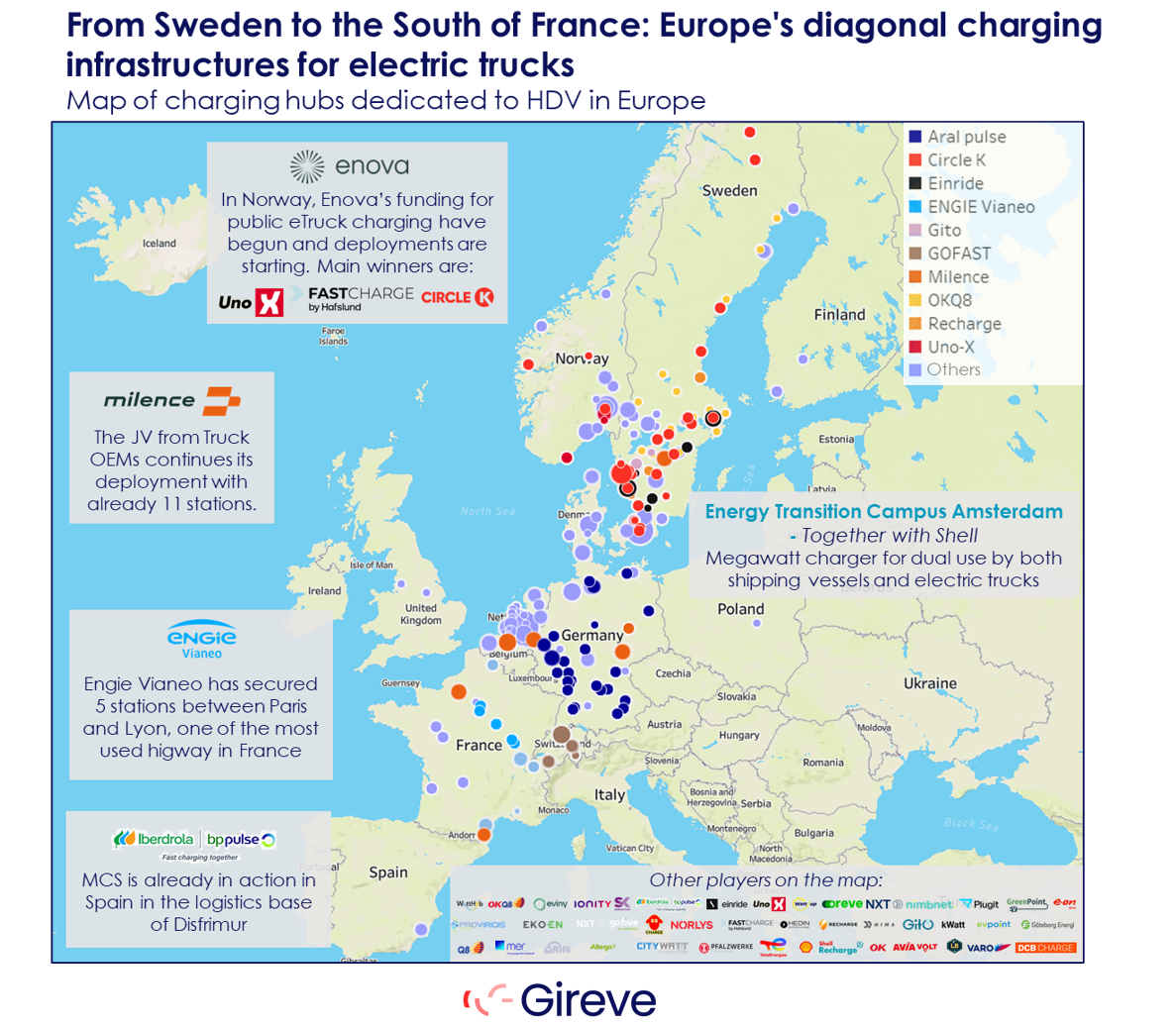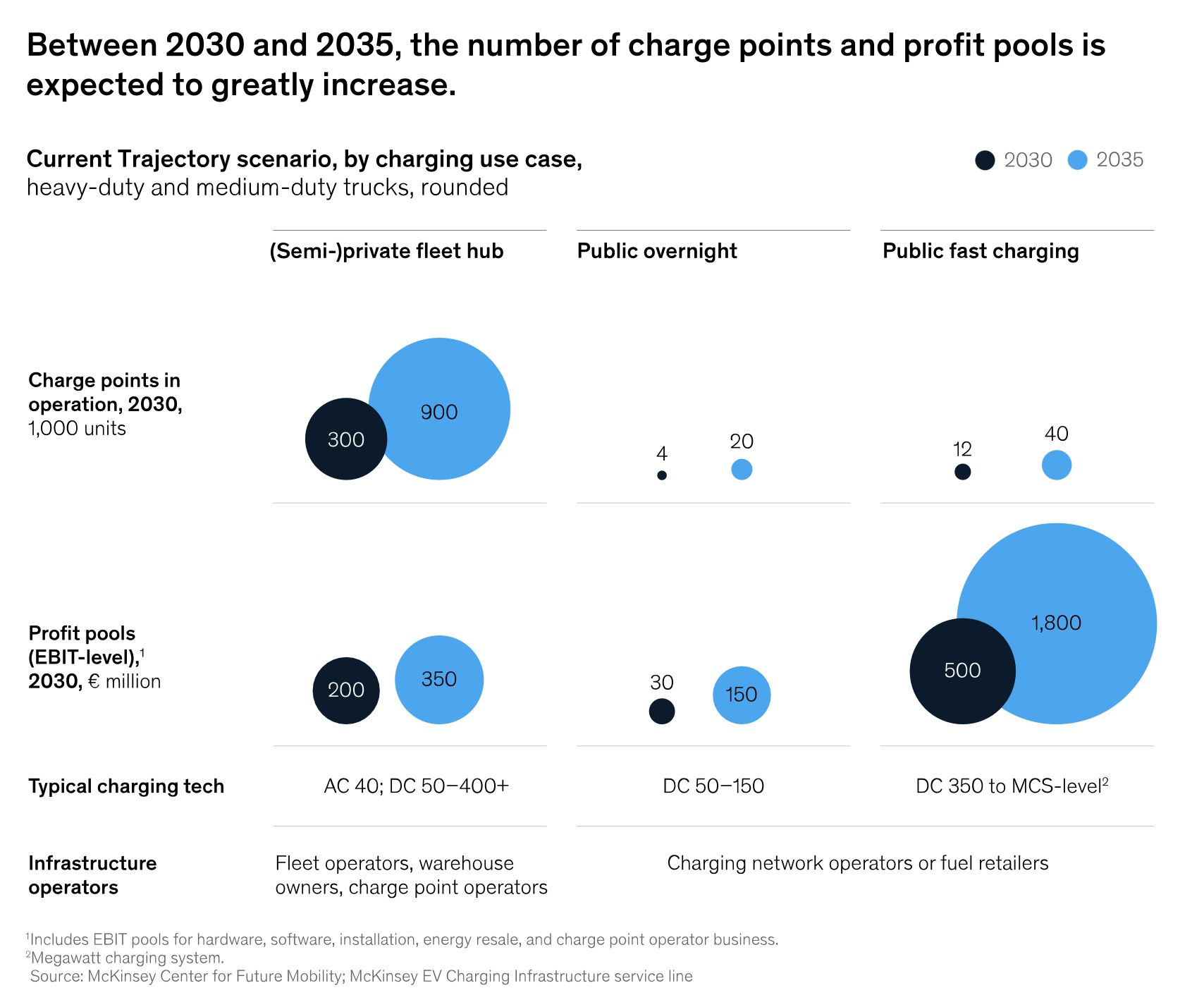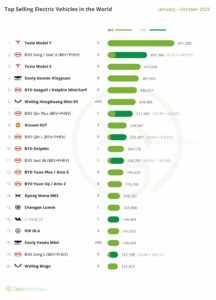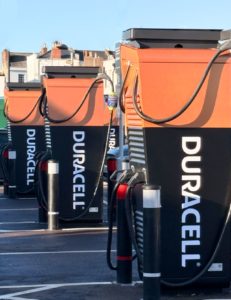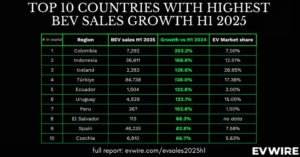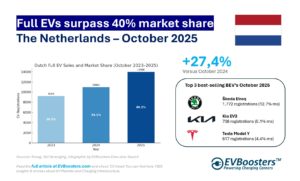A Growing Market for Electric Trucks
The European market for HDVs is evolving. In the third quarter of 2024, zero-emission vehicles (ZEVs) accounted for 4% of total Heavy Duty (Trucks, Buses and coaches) sales according to ICCT. This is a notable increase from the 3.2% reported in the first quarter, signalling the growing adoption of electric trucks, buses, and coaches. The sales share of light and medium electric trucks even reached 10% in the 3rd quarter of 2024 compared to 6% in 2023.
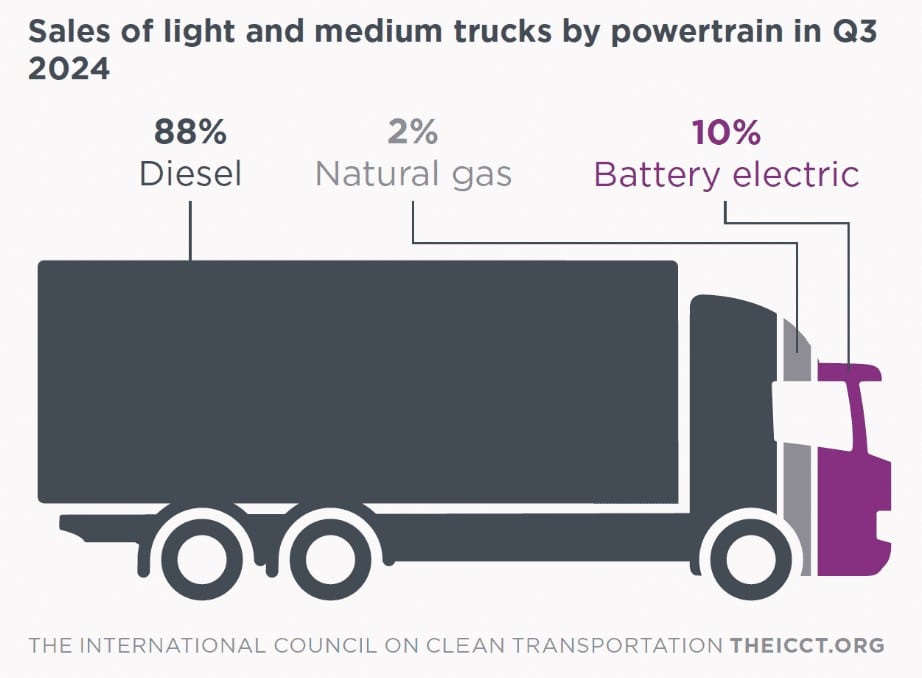
A study by PwC in 2022 predicts that by 2030, electric trucks will achieve a total cost of ownership (TCO) that is 30% lower than their internal combustion engine (ICE) counterparts. This makes electric trucks an economically viable option for road freight, especially when coupled with the environmental benefits of reduced emissions.
Mapping the Current Charging Infrastructure
An updated map of HDV charging stations for electric trucks (credits to Gireve) reveals a clear trend: most charging hubs are concentrated along major motorways, forming diagonal routes from the north of Sweden to the south of France. This strategic placement facilitates low-carbon freight transport across key logistics corridors. Countries like France, Germany, the Netherlands, Denmark, Sweden, and Norway are leading the charge with extensive deployment of HDV charging infrastructure.
Key Players in Heavy-Duty Charging Across Europe
- Aral Pulse: Known for its comprehensive EV charging network in Germany, Aral Pulse is expanding into heavy-duty vehicle charging, focusing on high-capacity hubs at key logistics centres.
- Circle K: Circle K has developed multi-use charging stations for HDVs and passenger EVs. It has a strong presence in Scandinavia and also focuses on remote regions.
- Gito: Gito is pioneering HDV charging hubs in Sweden, aiming to close the infrastructure gap in underserved areas.
- Gofast: Based in Switzerland, Gofast focuses on ultra-fast charging solutions for HDVs and integrates renewable energy into its network.
- OKQ8: Operating in the Nordic region, OKQ8 combines advanced charging technology with sustainable practices to support long-haul freight operations.
- Recharge: Recharge operates across the Nordics, specialising in high-capacity charging stations for heavy-duty electric vehicles along major highways.
- Uno-X: Uno-X has initiated the development of high-capacity charging hubs strategically located along Norway’s major freight routes, aiming to support long-haul operations and reduce downtime for electric trucks.
- Milence: This joint venture, formed by Daimler Truck, the TRATON GROUP, and Volvo Group, has already deployed 11 charging stations across Europe. Their network supports key logistics routes and continues to expand.
- ENGIE Vianeo: In France, ENGIE Vianeo has secured five strategically located stations between Paris and Lyon, one of the country’s busiest motorways. This ensures reliable charging access for HDVs on this critical route.
- Iberdrola: The MCS standard has been introduced in Spain, with Iberdrola implementing chargers at the Disfrimur logistics base. This pilot project marks a significant step in adopting ultra-fast charging technology for HDVs.
Legislative and Regulatory Support
European Union regulations are critical in driving the development of HDV charging infrastructure. The Alternative Fuels Infrastructure Regulation (AFIR) mandates installing charging stations with a minimum power output of 150 kW every 60 kilometres along the Trans-European Transport Network (TEN-T) core network. These regulations, combined with the EU’s targets for a 45% reduction in HDV emissions by 2030 and a 90% reduction by 2040, incentivise investments in charging infrastructure.
Growth charge point network across Europe for medium and heavy electric trucks in 2030
According to a report by McKinsey, the rollout will follow two key phases:
-
Private and Semi-Public Charging Hubs: In the initial stage, the majority of new infrastructure will be installed at private fleet depots or semi-public hubs. These facilities will primarily cater to trucks operating on predictable routes, allowing for overnight or between-trip charging.
-
Public Charging Infrastructure: Post-2030, the focus will shift towards expanding public charging points, particularly along highways. By 2040, Europe is projected to have approximately 100,000 public charging points to support long-haul electric trucking, making electric freight transport viable for operators relying on public access.
The role of the Megawatt Charging System (MCS)
The Megawatt Charging System (MCS) is a game-changing innovation in HDV charging. Designed specifically for heavy-duty vehicles, MCS chargers deliver up to 3.75 MW of power, enabling ultra-fast charging for large batteries. This technology significantly reduces downtime for electric trucks, making them more practical for long-haul operations.
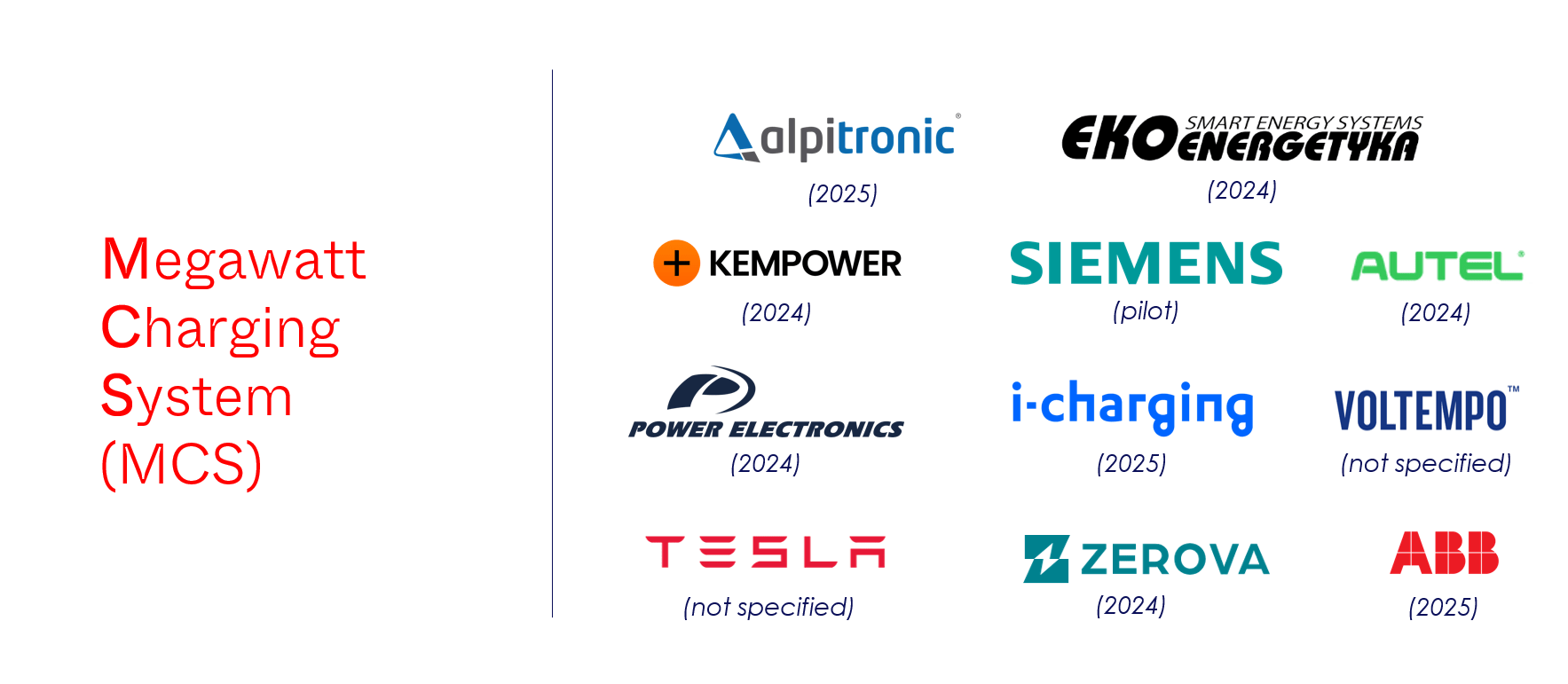
Key Takeaways and Opportunities for the deployment of Heavy-Duty Charging Solutions
-
Significant growth ahead: By 2030, Europe aims to have a comprehensive network of HDV charging stations to support the growing fleet of electric trucks, which will constitute 15% of the market.
-
Technological advancements: The Megawatt Charging System (MCS) is a key enabler for ultra-fast, high-capacity charging, reducing downtime for long-haul transport.
-
Development of digital infrastructure: Real-time route planning, booking systems, and seamless connectivity will enhance operational efficiency and minimise charging delays.
-
Collaborative opportunities: Investments exceeding €15 billion, supported by public-private partnerships and regulatory frameworks, present opportunities for companies to lead in this emerging market.
-
Challenges to address: Ensuring grid capacity and a strong regulatory framework while building stakeholder trust remains critical to success.
-
Strategic deployment: Optimising charging station placement along key logistics routes, such as the diagonal connections from Sweden to France, demonstrates Europe’s readiness for large-scale electrification.

